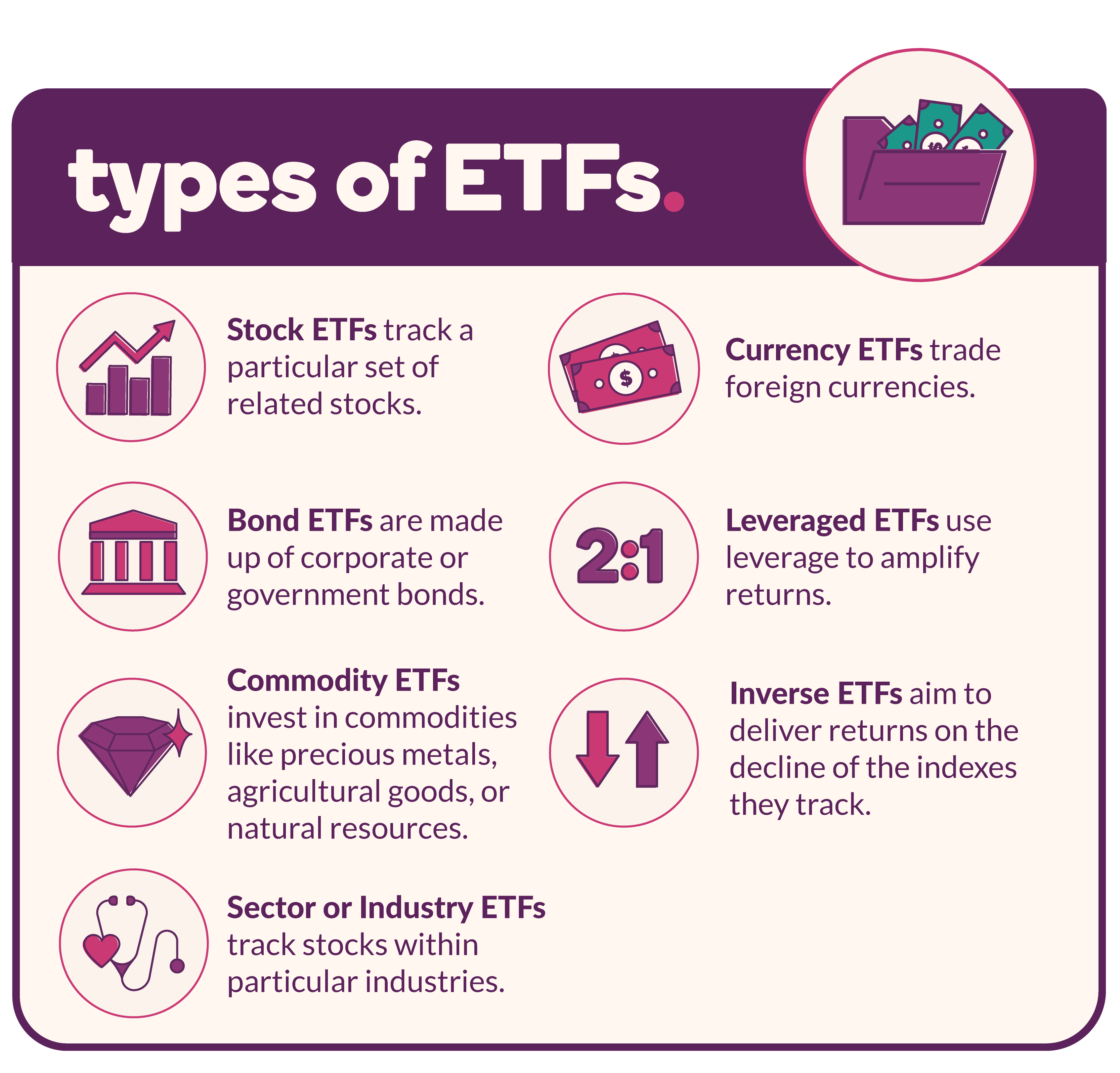Introduction

Image: alphalyticscm.com
In the realm of investing, exchange-traded funds (ETFs) have emerged as a cornerstone of modern portfolios. These versatile instruments offer investors a plethora of options to align with their financial goals and risk appetite. This article delves into a comprehensive overview of the various types of ETFs, providing valuable insights into their unique characteristics and investment applications. From industry-specific sectors to specific geographic markets, the diverse range of ETFs allows investors to tap into a wide array of opportunities.
Sector ETFs: Targeted Exposure to Industry Leaders
Sector ETFs provide investors with focused exposure to specific industries or sectors within the broader economy. These funds track the performance of companies operating within a specific domain, such as technology, healthcare, or real estate. By investing in a sector ETF, investors can benefit from the growth potential and market trends prevalent within that industry. For example, the ETF “Technology Select Sector SPDR Fund” (XLK) provides a curated portfolio of leading technology companies, mirroring the performance of the S&P 500 Technology Sector Index.
Geographic ETFs: Diversification Across Countries and Regions
Geographic ETFs offer investors access to the equity markets of specific countries or regions around the world. These funds provide exposure to a diversified pool of stocks from different economies, helping to mitigate risks associated with investing in a single country. Geographic ETFs can align with investors’ beliefs in the economic potential of specific regions or economies. The “iShares MSCI Japan ETF” (EWJ) offers an investment vehicle tailored to the Japanese equity market, capturing the growth opportunities and fluctuations within that nation’s economy.
Bond ETFs: Fixed-Income Exposure with Diversification
Bond ETFs provide investors with access to a diversified portfolio of fixed-income securities. These funds invest in a range of bonds, such as government bonds, corporate bonds, and municipal bonds. Bond ETFs offer investors the potential for stable income generation and can help to balance the overall risk-reward profile of a portfolio. The “Vanguard Total Bond Market ETF” (BND) provides a diversified exposure to the U.S. bond market, offering a broad range of fixed-income investments.
Commodity ETFs: Access to Natural Resources
Commodity ETFs provide investors with exposure to the prices of various commodities, such as gold, oil, and wheat. These funds invest in contracts that track the spot or future prices of these commodities, offering investors the opportunity to tap into the performance of global commodity markets. Commodity ETFs can be suitable for investors seeking diversification or exposure to specific sectors, such as energy or agriculture. “The SPDR Gold Shares ETF” (GLD) holds physical gold bullion as its primary underlying asset, allowing investors to gain exposure to the gold market through a publicly-traded fund.
Inverse ETFs: Seeking Opportunities from Market Declines
Inverse ETFs, also known as short ETFs or bear ETFs, provide investors with the ability to benefit from declines in the value of a specific market, index, or security. These funds utilize various strategies, such as shorting stocks or using derivatives, to generate returns that move in an opposite direction to the underlying benchmark. For example, the “ProShares Short QQQ ETF” (PSQ) offers exposure to the downside of the technology-heavy Nasdaq 100 Index, potentially profiting from market downturns within that sector.
Thematic ETFs: Capturing Mega-Trends
Thematic ETFs provide investors with targeted exposure to specific themes, trends, or strategies that may not be sufficiently captured by traditional ETFs. These funds focus on areas such as clean energy, artificial intelligence, or global infrastructure, allowing investors to invest in the potential growth of emerging industries and disruptive technologies. The “ARK Innovation ETF” (ARKK) offers access to innovative companies involved in areas such as DNA technology, robotics, and artificial intelligence.

Image: theinvestorpost.com
Different Types Of Etfs







